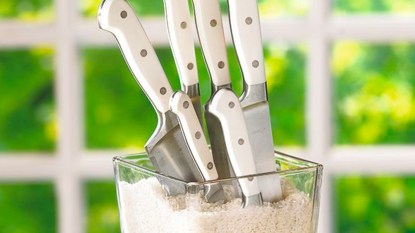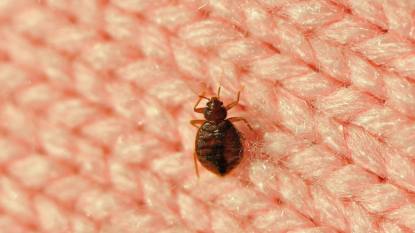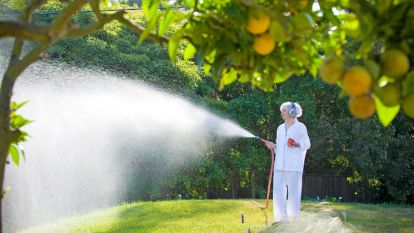How to Fix a Squeaky Floor: Home Pros Swear by This Surprise Baby Powder Trick
Spoiler alert: bicycle wax works too
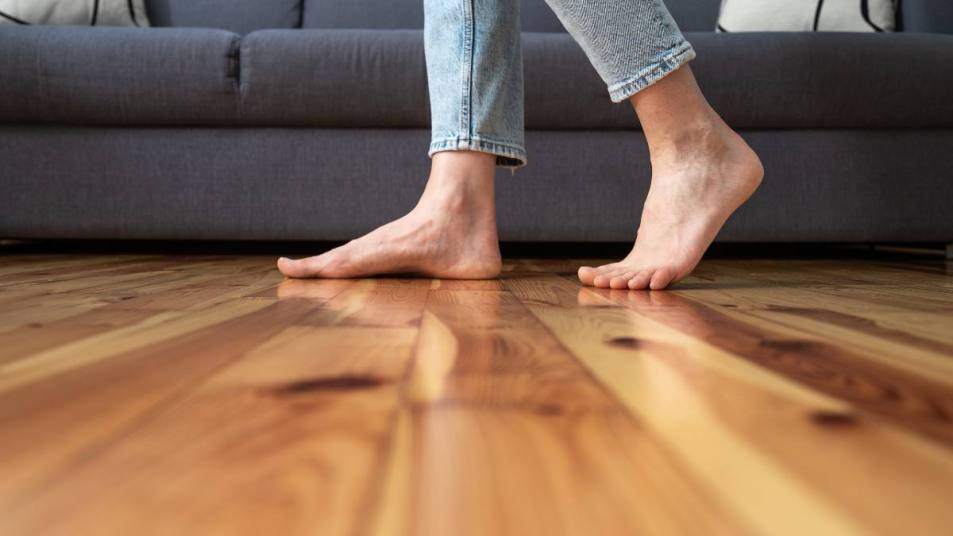
A squeaky, creaky floor is an annoying nuisance that can drive you crazy. The causes are typically either structural — like a loose floorboard or two floorboards rubbing together — or environmental — think overly dry conditions in your home — or a combination of the two. Over time, as your home settles and wood and other materials have the chance to expand and contract, fasteners like nails and screws can loosen a bit, causing some squeaks to manifest. Luckily, it’s fairly easy to fix, and you won’t have to call in a pro. We talked to several experts to get their tips on how to silence a squeaky floor.
How to silence a squeaky hardwood floor using baby powder
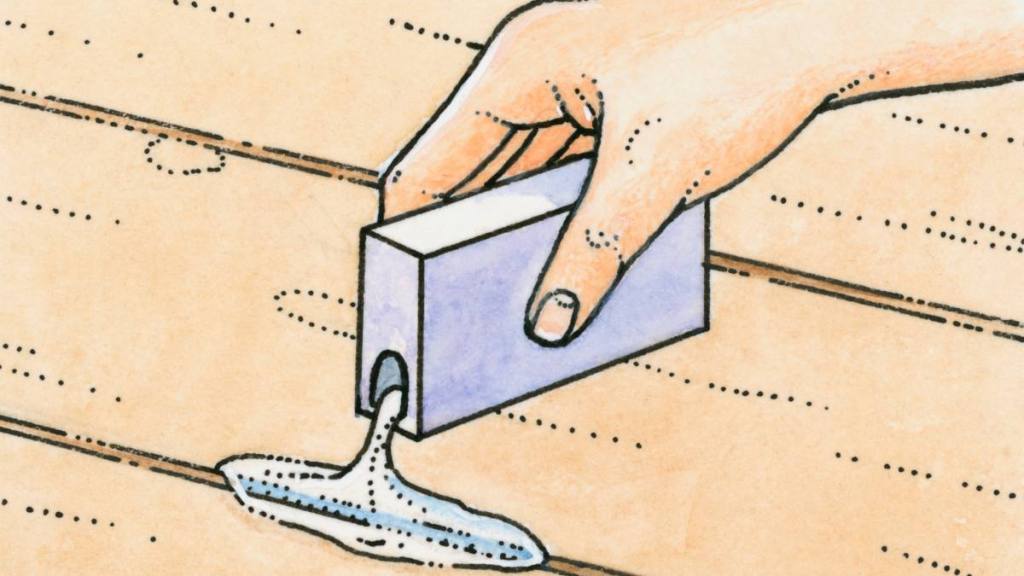
Baby powder is a household staple that can be used to detangle knotted jewelry, reduce chafing, and treat sweat stains. It can even be used as a substitute for dry shampoo on those mornings when you’re in a time crunch. And, would you believe it — it’s also used to fix squeaky hardwood floors. “I have given this tip over 30 years,” says Lou Manfredini, Ace Hardware’s Home Expert. “The odds are that it works about 50% of the time and will not totally eliminate the squeak, but it’s worth a try.”
Once you’ve located the problem by walking across the floor to pinpoint the correct area, AKA the noisy floorboards that are rubbing together to cause the sound, sprinkle a generous amount of baby powder (or powdered graphite) directly onto the wood where the floorboards meet.
“Then wrap a small board with a rag and hammer the board with light to medium taps for a few minutes over the area to work the powder into the grooves,” says Manfredini. Then use a damp rag to wipe up the excess. This powder helps to eliminate the squeak by lubricating the wood and keeping the floorboards from rubbing together. If it’s going to work, it will take a few days to really know if it was effective, Manfredini says.
While this quick trick comes in handy, it’s not a permanent fix. After a while, your new noise-free areas will need another coat of baby powder, especially if you have little ones running through the house.
See the tip in action in this YouTube video from RW Supply+Design
How to silence a squeaky floor from below
“Nine times out of ten, a gap is created, and when you apply pressure to it, your weight is allowing the subfloor to bend in that gap space, and that’s what causes the space and the squeak,” says home improvement social media content creator Nils Rasmusson. “To fix it, your goal is to get rid of it so there’s no gap at all or the gap has been manually filled in.”
Fill gaps with shims
“If you have access to the floor from the bottom side — like from a crawlspace or in an unfinished basement — that’s always your best bet to fix the problem,” says Rasmusson. The easiest and quickest way is to use wood shims that you can buy at any big box home improvement store. Go to your basement or crawl space; you should be able to see your subfloor from there. Ask a friend or family member to walk on the floorboards above. Your problem board should wiggle a little when it’s stepped on or flexed up and down with the weight. Once you’ve found the faulty board, lather some wood glue onto the shim and place it into the gap in between the joists and the subfloor and then just score it and snap it off, says Rasmusson. The shim eliminates the space between the floor and the subfloor, which stops the squeaking. Because you’re applying this fix from below, it will work on any type of floor.
Stop the squeak with some extra support
Another method that can be used from below involves using a block of 1×3 or 2×4 wood and screwing and gluing it to the joist in the area where the floor is making noise. Once again, begin by having someone walk on the floor above you so that you can identify the problem area.
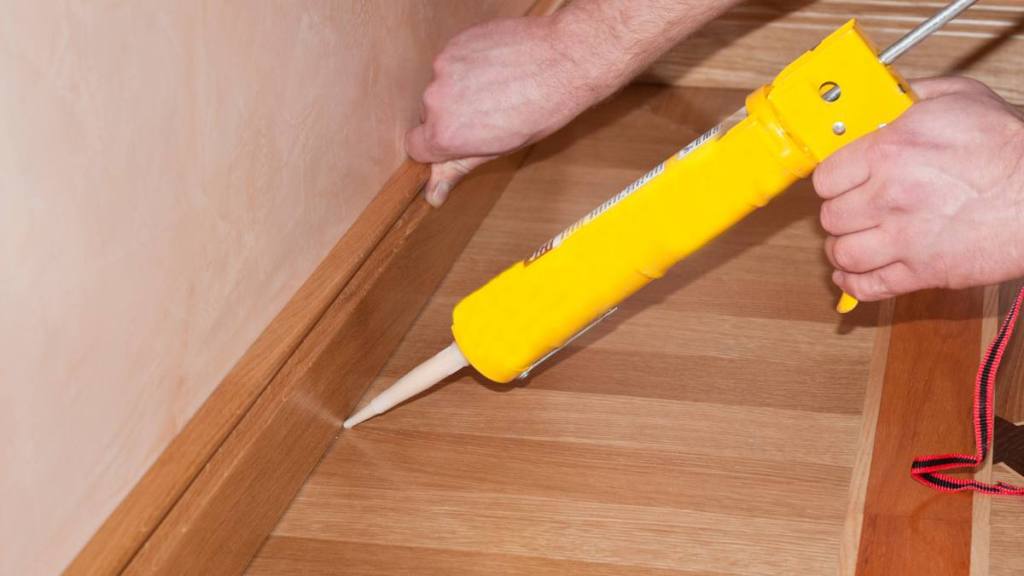
Use wood glue, caulk or putty to fill the gap from below and then fasten the block up against the sub floor and the joist by driving screws threw the wood into the joist, says Rasmusson. “You’re essentially providing a platform for the subfloor to sit on so it has no room to bend or bow and create that squeak.”
This would typically occur in the middle of the floor, where there isn’t quite as much support as there is around the edges of the floor. “A lot of times, the squeaking manifests itself in the subfloor, which is really just a sheet of MDF or plywood, and that can creak when you apply weight to it,” says Rasmusson. “Nail or screw a block sideways into the joist, so there’s more support for the subfloor, and you solve the problem,” Rasmusson notes that you can also apply wood glue to the sides of the wood that will rest against the subfloor and the joist.
See Rasmusson’s video with several squeaky floor fixes – including both of these!
How to silence a squeaky floor from above
If you don’t have access to the floor from underneath, you’ll need to resolve the problem from above in order to stop the squeak. For hardwood, vinyl and carpet, it’s easy to use a product called Squeeeeek No More (Buy on Amazon, $20.50), says Danny Lipford, host of Today’s Homeowner television show. “Essentially, these are long, very thin-diameter screws that will break off so that nothing is left sticking up above the floor once you’ve used them.” You’re basically driving a screw through the carpet, pad or subfloor, and into the joist or through the vinyl or hardwood and into the joist. Floor joists are typically installed 16 inches apart, so once you find one, use a tape measure to find the others, and then screw in the Squeeeeek No More product every four inches or so, says Lipford. Once installed, you’ll use the tool provided to snap off the top of the screw below the floor line. On a wood floor, you’d just then use putty to fill the small hole left behind. On a carpet, you won’t need to do anything at all.
See Lipford’s video here that demonstrates using Squeeeeek No More on a carpeted floor.
Squeaks coming from under a carpeted floor can also be fixed by rolling up the carpet and sinking screws into the subflooring below, says Lipford. Walk around on the floor to find the noisy spots, then find the nearest joist before using a drill to insert screws about every four inches along the joist where needed. See this method in action in the LRN2DIY video linked above.
How to silence a floating squeaky floor with bicycle wax
Because laminate floors are typically fit together as tongue and groove flooring, as the boards expand and contract with the interior “weather” inside of your home, you’ll hear squeaks developing fairly quickly after installing these types of floors. But there’s a quick and easy from-above fix that will help get rid of the noise. Instead of using baby powder on this type of floor, pick up a bottle of bicycle wax and squeeze a small amount into the grooves between the boards. Because you’re using wax instead of powder, the product will stay in place longer and hold up better to the increased friction that happens between tongue and groove floating boards. Prevent some expansion and contraction of the boards by running a dehumidifier when it’s humid out and a humidifier in the winter when the heat is on and the flooring tends to dry and contract a bit.
See the laminate floor fix in the YouTube video from Soundproof Guide here:
For more floor tips, click through the links below!
14 Brilliant Uses for Orphan Socks — From Dusting Floors to Stopping Umbrella Drips
How To Deep Clean Hardwood Floors (Hint: Never Use a Steam Cleaner)
Best Way To Clean Tile Floors: Experts Share The Tricks for Various Materials



